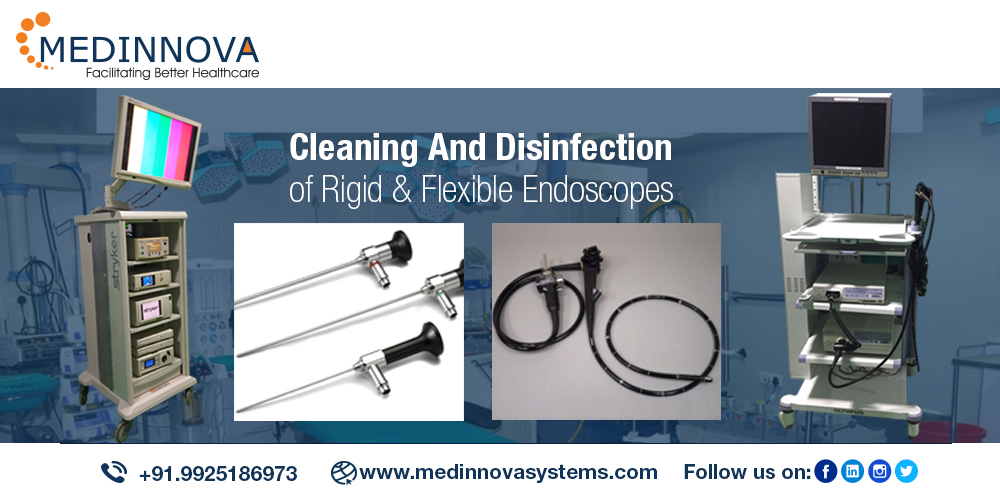Being an influential medical device that contributes towards providing the best treatment for a patient, an Endoscope is used to look inside the body of a patient or examine the surface of a tissue or organ. Endoscopes are directly inserted into the organ, unlike other imaging techniques, in order to confirm a diagnosis. An Endoscope is also used for biopsies, surgery, etc. This device consists of a flexible or rigid tube with a camera attached.
Basically, there are two types of Endoscopes – Rigid Endoscopes and Flexible Endoscopes. The former consists of a metal tube that contains a series of lenses. It offers the best resolution and a high-quality image. With a camera system, surgeons are able to view the magnified image of the area. It is mostly used in ENT, Urology, Gynecology and even general surgeries. On the other side, a flexible Endoscope allows the user to navigate areas of a body that are difficult to be examined. However, its lenses contain flexible fibers; hence, the image may not be as defined as the image delivered by a Rigid Endoscope.
Though both the Endoscopes are used to look inside the body for medical reasons, there is a difference. Rigid Endoscope is composed by a tubular telescope. It does not have a bending capacity. Flexible one has a long tube. It has a limited bending capacity. It offers a sufficient view of the cavity. Flexible Endoscopes are composed of distinctive parts like Control Body, Insertion Tube, Bending Section, Light-guide Connector Unit, etc.
There are several common procedures required to prevent risks of infections associated with both the Endoscopes.
1. Cleaning
The initial cleaning removes the organic soil and kills most of the microbes on the device. The process begins when the tube is removed from a patient and wiped with a pad covered with a disinfectant. The internal air and water channels are cleaned with water. The device then can be tested for possible leaks. Importantly, the Endoscope and all its parts undergo deep cleaning with warm tap water using a disinfectant-detergent solution. It is important to realize that such devices should be cleaned within a few minutes after its usage ends. They should not be allowed to dry until microbes and organic soil are removed completely; it is difficult to remove the same when the device is wet. Rinsing the device and its parts to remove the disinfectant-detergent is equally important.
2. High-level Disinfection
The next step includes soaking the device in a high-level disinfectant at a specific temperature. This disinfectant kills all Gram-Negative and Gram-Positive vegetative bacteria, fungi, all types of viruses and even mycobacteria. It is also capable of killing bacterial spores; but the time duration required to kill the same tends to be longer.
3. Sterilization
The process of sterilization includes all the steps from cleaning to a high-level disinfection use. The exposure time for sterilization is longer so as to kill spore-forming bacteria. The final rinse should include the use of sterilized water. Also, internal channels are dried using an air forced through them. The Endoscopes are covered with a sterile cloth. A professional who is responsible for the deep cleaning of Endoscopes should wear a plastic face that appropriately covers his nose, mouth and eyes. Also, the use of rubber gloves and water-proof gowns is necessary.
Medinnova Systems Pvt. Ltd. plays a remarkable role in the success of a healthcare facility. It offers a wide range of medical equipment and thus provides a customized single-source solution to fulfill the requirements of the industry. Explore Rigid and Flexible Endoscopy Systems offered by Medinnova Systems by calling the Sales Team today at +91 9925186973 or sending an email at sales@medinnovasystems.com

